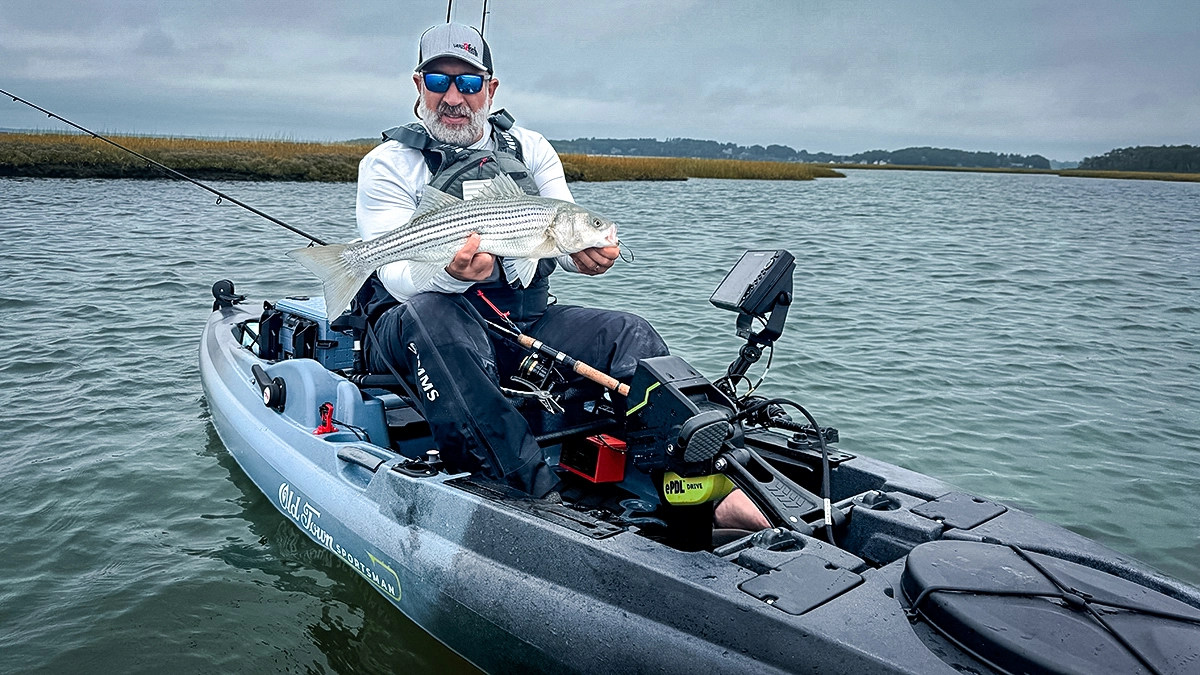In my humble opinion, striped bass might just be the perfect gamefish. They eat everything from invertebrates nearly invisible to the naked eye up to 15-inch baitfish. This means you can catch them on just about any type of gear you desire, from flies and light tackle to heavy trolling setups. Among my favorite ways to chase them is with spinning rods; the kind you might use for largemouth. In my mind, there’s no better sport than a 28-inch striper ripping drag as the reel screams.
Another cool thing about stripers is the variety of habitats they utilize. Depending on the season, you can find them in waters with depths measured in inches or fathoms, sometimes on the same day. Stripers frequent estuarine environments, shallow flats, bay complexes, open ocean, and deep-water canyons. My favorite places to target them are on the inshore grounds; in salt marshes, tidal raceways, and the like. It’s a great place to get up close and personal — really meet them on their own turf.
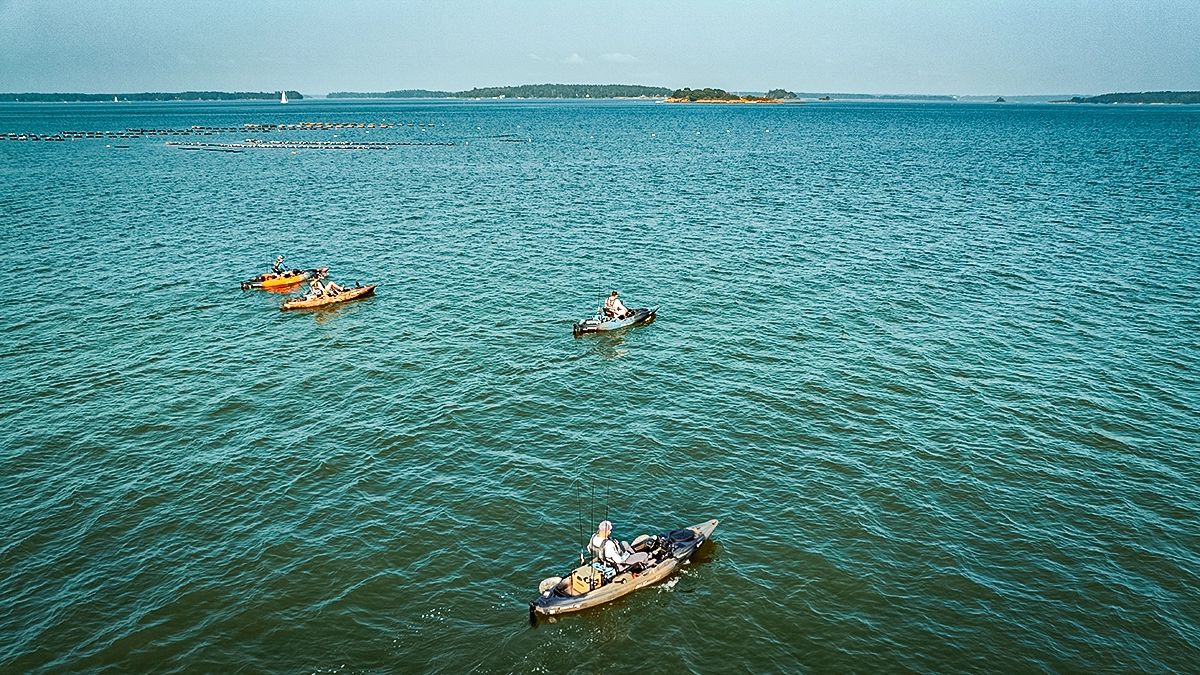
One of the best ways to fish these areas is by kayak. The relatively shallow waters can make it difficult to get a boat in and the bottoms can be hazardous to propellers, plus the noise created by internal combustion engines can send stripers scurrying in a hurry. The stealth that a kayak provides in skinny water certainly gives you an edge. And gliding along silently on the surface lets you see more of the world below you.
Striped Bass Fishing in Casco Bay Maine
Last July, Old Town invited me up to Casco Bay for a couple days of striper fishing along Maine’s rocky coastline. The plan was to catch stripers as we explored brackish river systems, estuaries, tidal raceways as well as the open beach using the first-of-its-kind Old Town Sportsman BigWater ePDL+ 132.
The BigWater ePDL+ 132 is unique because it utilizes a hybrid pedal drive system that lets anglers use their feet to propel themselves along, but offers a built-in electric motor that can augment — or replace — that human propulsion when needed.
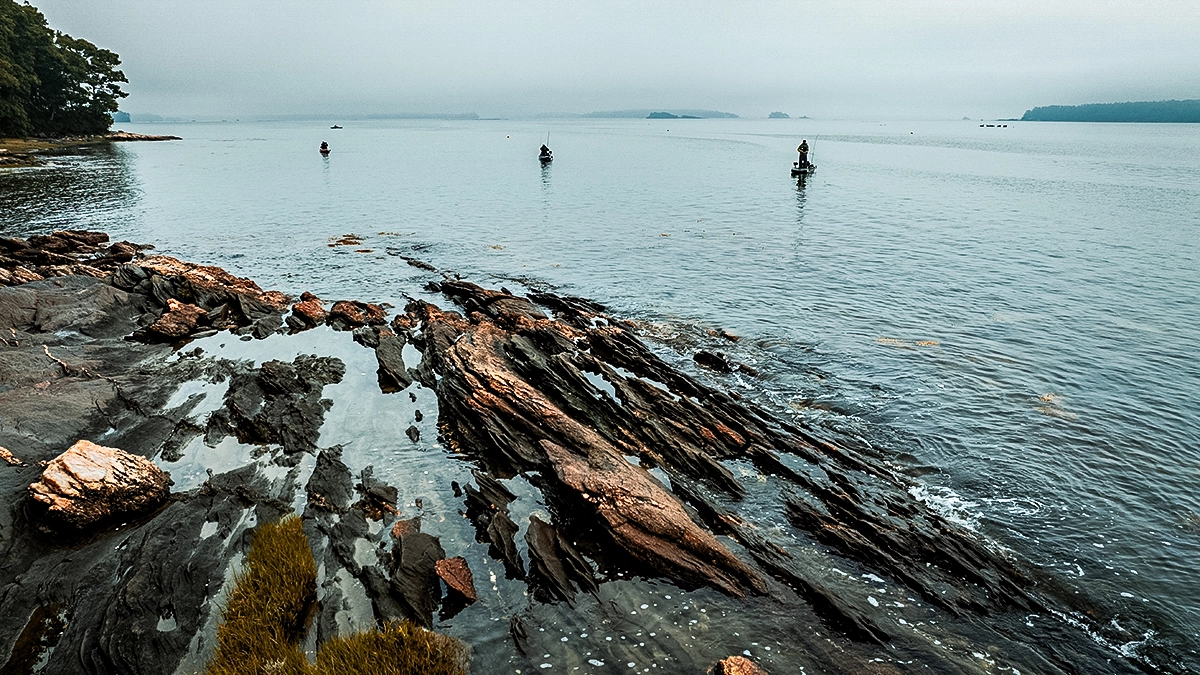
Good Company in Great Scenery
I had the privilege of fishing with a couple members of the Old Town team: some talented folks from Osbourne Media (who took the excellent photos you see in this article), and my former colleague from Salt Water Sportsman, Sam Hudson.
In addition to spearheading all of Old Town’s content initiatives, Ryan Lilly is a lifelong Mainer, Registered Maine Hunting & Fishing Guide, and avid kayak angler. He knows Casco Bay like the back of his hand, and provided us with valuable intel.
As a resident of the greater Portland area and an accomplished outdoorsman, Dan McFetridge, E-Commerce Marketing Manager, also knows a thing or two about targeting stripers via kayak in Casco Bay.
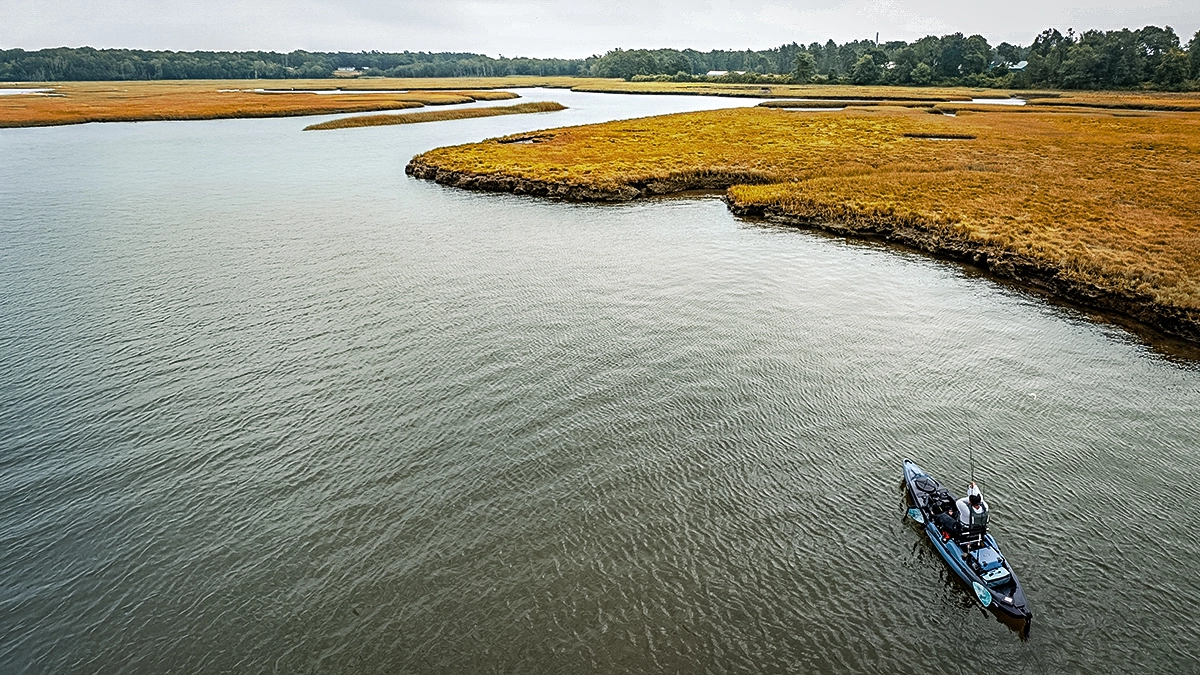
The Kayaks
As someone that grew up in the Northeast, I have spent plenty of time in canoes, kayaks, and other small vessels. There’s a rack in my backyard that holds three, and there’s a few more scattered throughout the yard. Despite that, I don’t have much experience with the pedal-drive kayaks that have become so popular.
The advantage is obvious; by using your feet to propel the vessel, your hands are left free to cast, change baits, unhook fish, or whatever you need to do. This lets you work structure efficiently, hold your spot in current, and cover ground with ease. After experiencing it for myself, I feel comfortable saying it’s the easiest way to fish from a kayak.
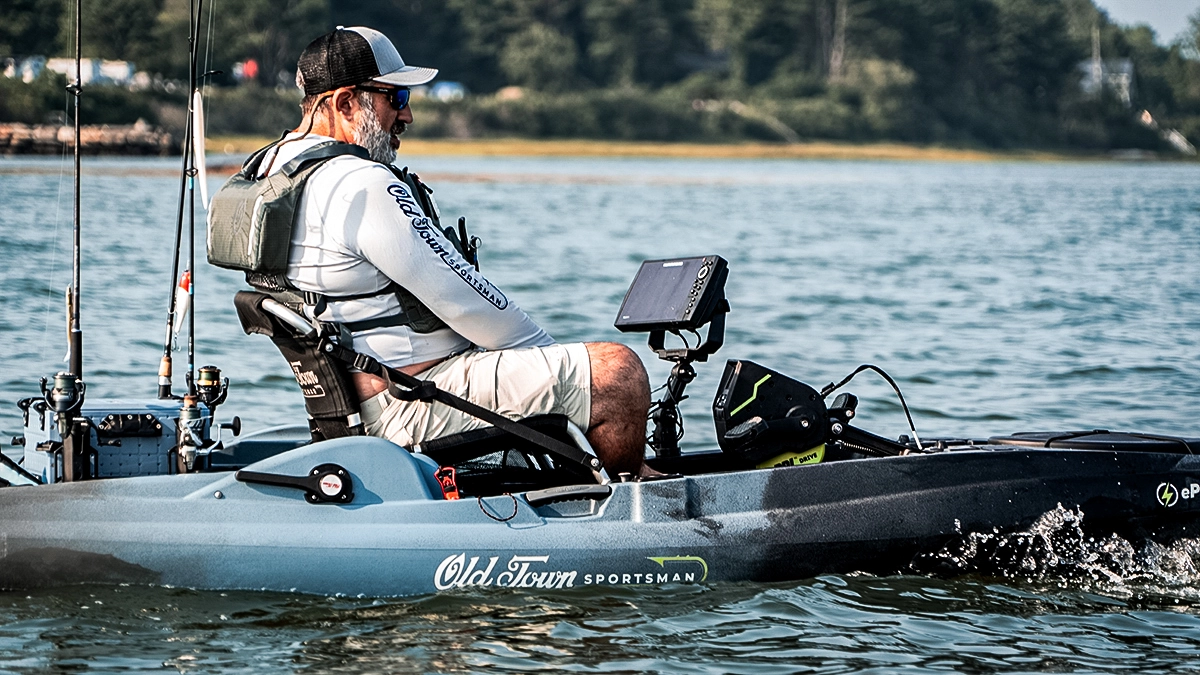
Pedal Assist
Even the most fit angler can get tired, particularly when battling tide or current, which is why the Old Town Sportsman BigWater ePDL+ 132 incorporates an electric motor into the pedal assembly. The result is a pedal-assist system that provides varying degrees of assistance to the pedaler.
The lowest setting provides a little boost, while the top settings almost move your feet for you. You can also let the motor do all the work and stop pedaling all together.
The Battery
At the heart of the powerplant is a 36V 20Ah Li-Ion battery pack. Battery life is extremely variable, based on how much the assist is used and at what level, which is why Old Town doesn’t provide exact expectations for battery life. But two days of fishing while using the “cruise control” setting extensively only seemed to drop the battery level a couple of bars. Even if you do run out of juice, you can still use the Sportsman BigWater ePDL+ 132 as you would any other pedal kayak.
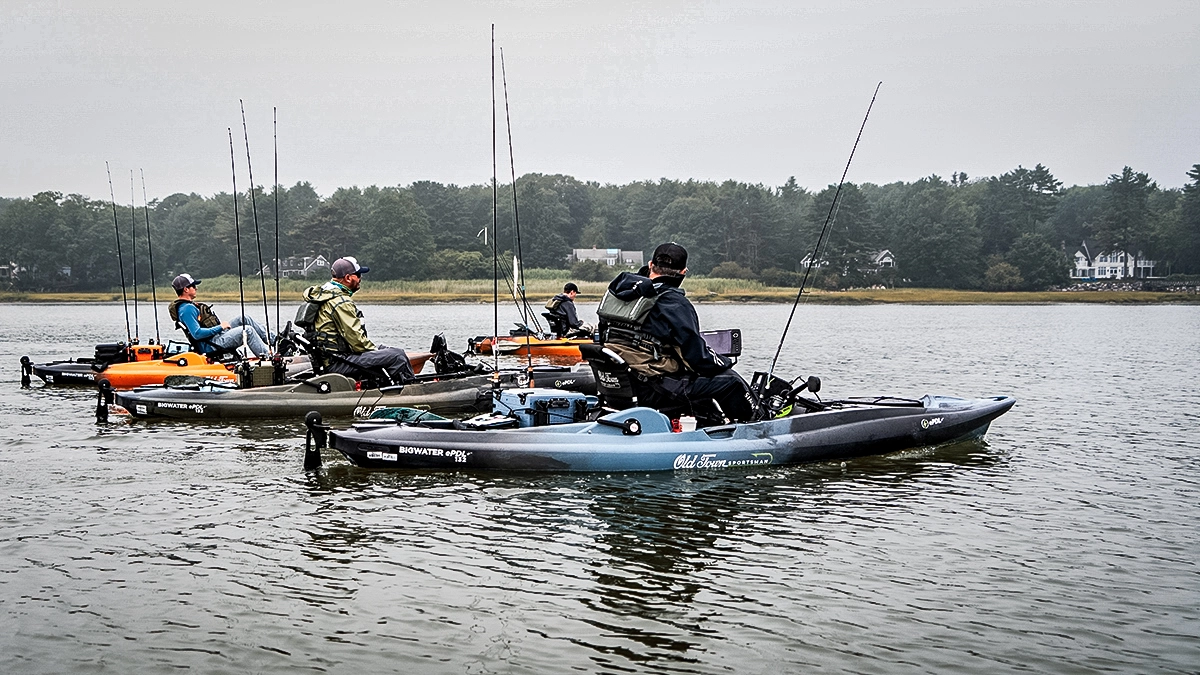
That’’s the brilliance of this system: It acts like the motor module found in many electric commuter bicycles. It’s not necessary for the operation of the kayak, so you can just keep trucking along without it. If you drain the battery completely, you’re still left with a perfectly functional fishing kayak.
Controls
Controlling the motor system is simple with the use of a push-button interface conveniently located on the top of the motor housing. Speed and assist mode are adjusted by pushing a few buttons. The motor assembly removes easily for transportation, and doing so cuts down on the weight of the vessel so you can throw the kayak on a roof rack or put it on a trailer.
Bearing special mention, the seat on this kayak is fantastic. Though I’ve grown up fishing out of paddlecraft, I never found a way to sit that was particularly comfortable; but the elevated perch on the BigWater ePDL+ 132 remained comfortable for dawn-to-dusk days on the water. The kayak was also extremely stable, and I spent a lot of time standing and casting.
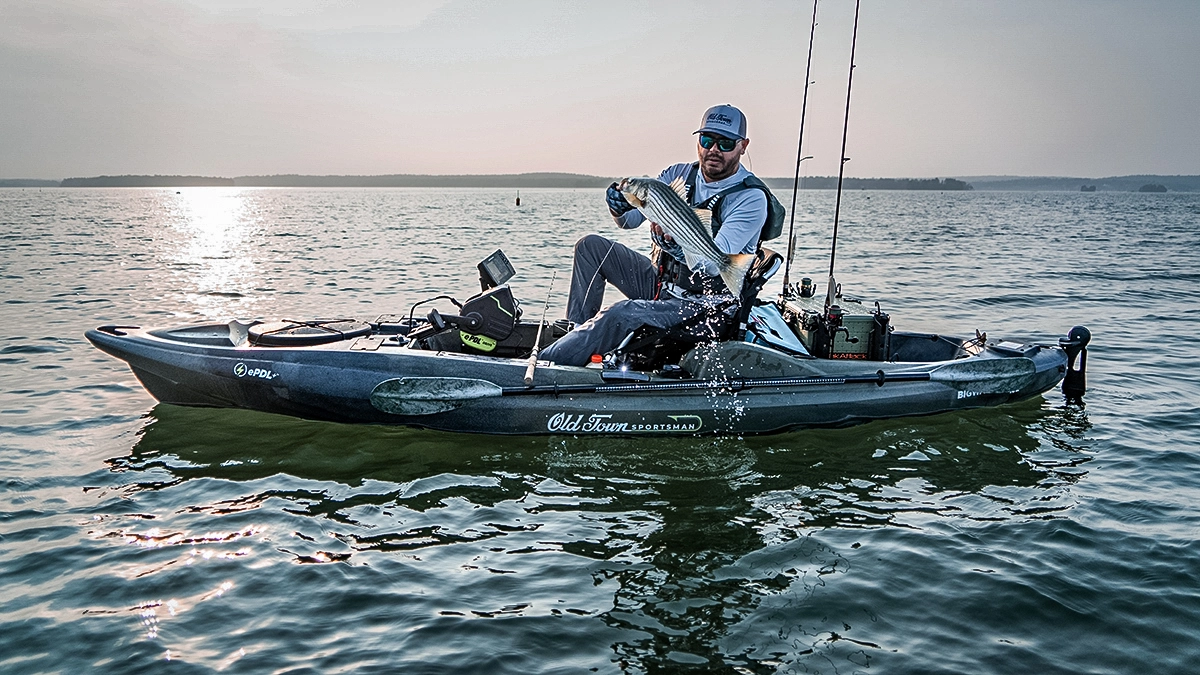
The Fishing
On the first day, we launched from a waterfront park in Freeport and took off to explore the shoreline of the nearby island. It’s Maine, so of course it rained most of the day. At one point, we rushed to the launch with thunder cracking off in the distance. Typical.
We probed coves, points, and offshore bars with soft plastics; Z-Man DieZel MinnowZ rigged on leadheads and 9-inch Lunker City Slug-Gos. The fishing wasn’t easy, and we had to cover some ground to hook up. The pedal drive/motor combo made it easy to move from structure to structure, and definitely played a big role in the success of the day.
Eventually, I found a willing taker hiding among the kelp on the rocky shoreline of the island. It came up and smashed the Slug-Go I had been throwing, nearly flinging it from the water’s surface. The bite turned on after that ice breaker, probably a result of the tide starting to push baitfish around. The rest of the crew began to hook up as well.
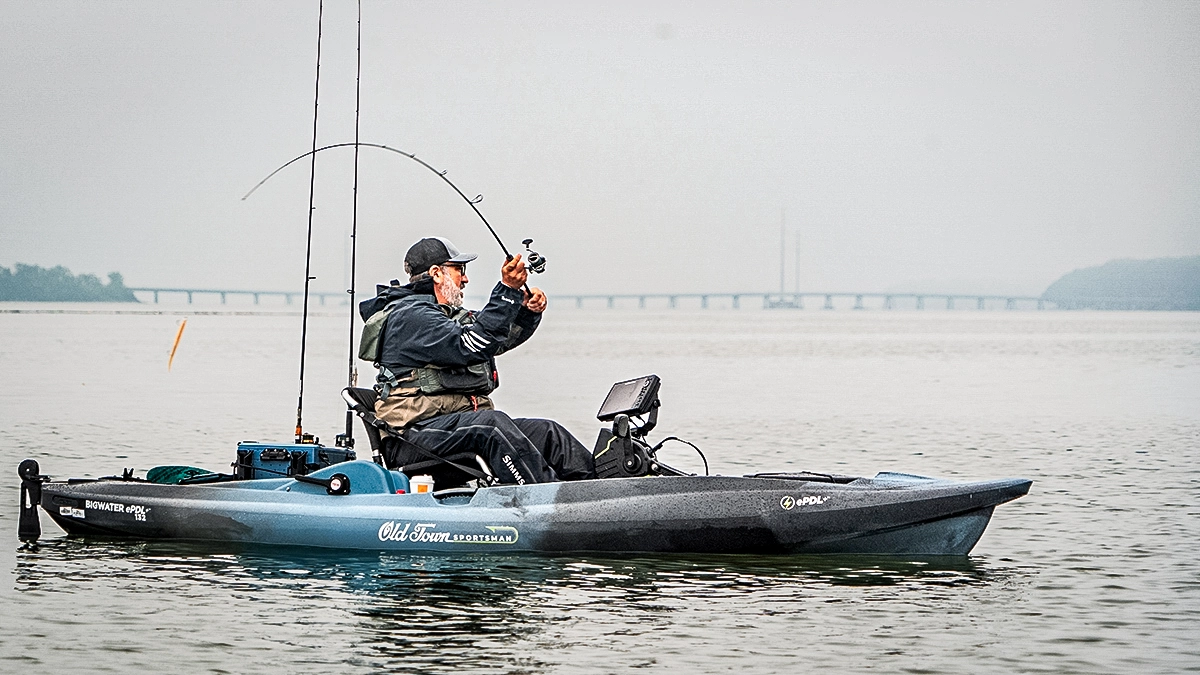
We earned our fish that day, but that’s not to say it was unproductive. At one point, I almost lost my favorite rod, a G. Loomis NRX + Inshore spinner, when a striper grabbed the DieZel Minnow I let dangle below the boat while I was releasing another I had caught.
I also hooked something I never got a chance to see, and to this day I tell myself it was one of the many sturgeon we saw getting airborne. And if it wasn’t, it might be that 50-pounder I’ve been dreaming of since I was a kid, because it dumped just about all the line on my Stradic in a hurry.
As the sun burned off the cloud cover, the stripers sought the refuge of deep water. We took off after them using the electric motors in our kayaks, quickly covering the miles it took to get to the piece of offshore structure where they were now congregating. We worked the 40-foot depths with the soft swimbaits, and were rewarded with a few nice fish. The day ended with an epic sunset as we loaded the boats back up.
Day 2
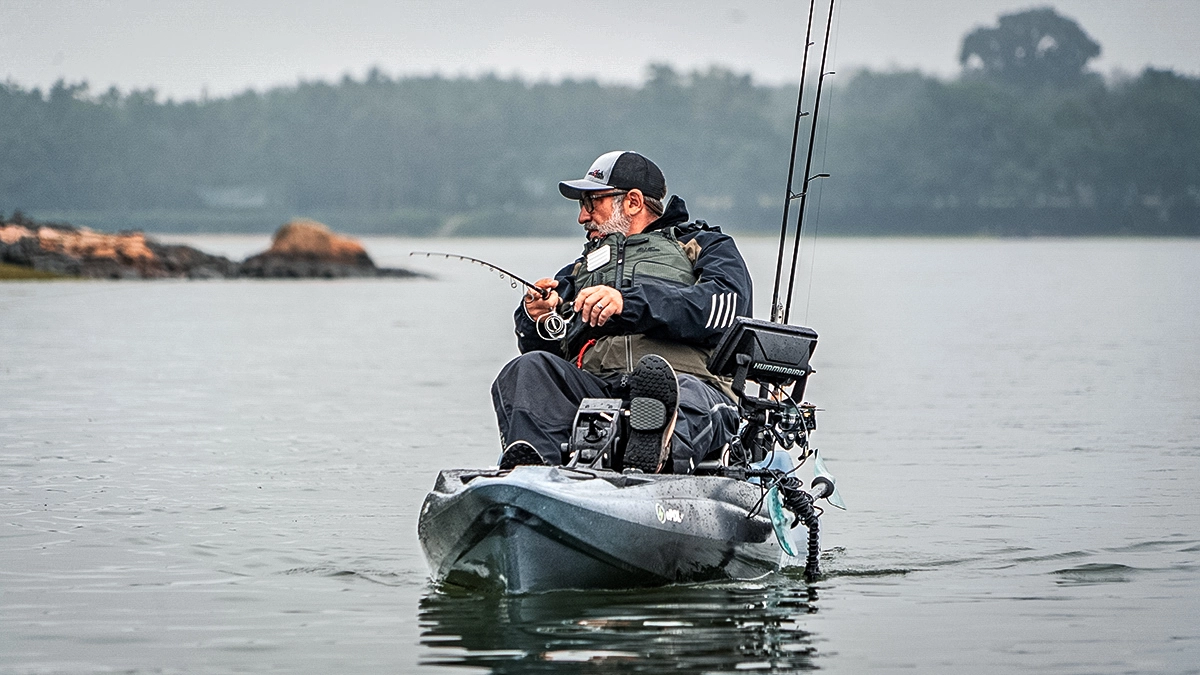
Day two had us launching off an open beach as the first rays of civil twilight filtered in. We would be fishing a tidal river that had its origins in a salt marsh fed by small streams. The marsh complex fed a large, tidal river that was moving along at 5 to 7 knots. It raced out to Saco Bay, then on to the North Atlantic.
Fishing once again proved somewhat difficult, though we managed to find fish. To stay productive we had to work a variety of structure, a hallmark of fishing in tidal waters. As they rise and fall, they push the baitfish around on the resultant current. Finding the areas where bait, current, and stripers clash is the key to success.
To find that sweet spot, we had to move around quite a bit. We first headed out into Saco bay, fighting the brisk tide as we went. The current was so stiff that we left the Osborne Media group behind; they didn’t have the motor-assisted models we did and couldn’t escape through the rushing waters. But despite our efforts, the open waters of the bay did not prove fruitful.
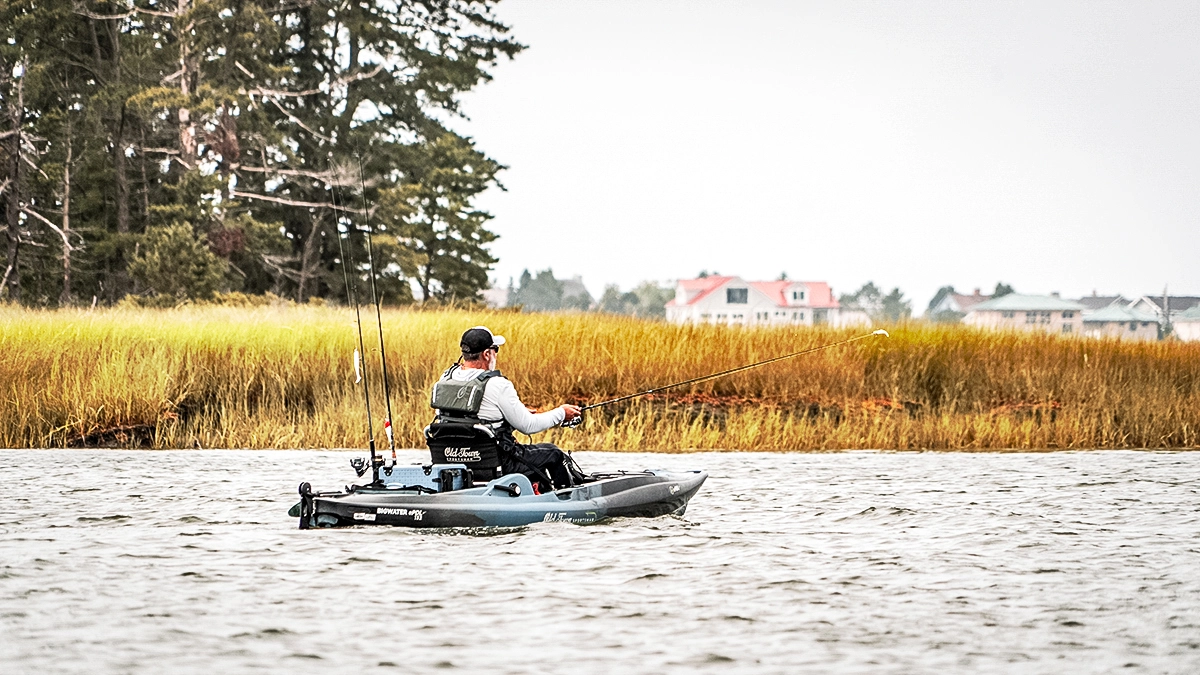
We returned through the narrow inlet, and worked the seawall with soft plastics. This resulted in the first bites of the day. The current made fishing tough, but I was able to set the motor to counteract the tide and hold position in the most productive zone. The bite was good while it lasted, but as the water built it turned off.
Some members of the groups went to work the bar at the mouth of the river, which was covered in water at that point. I departed at full steam to the salt marsh in the back as it is one of the most familiar habitats for me.
This salt marsh complex was similar to the ones I fish back home, and I was able to identify a few key points that I thought would hold fish. As the tide ebbed and the water started leaving the marsh, the bite turned on. After I landed the first fish, I sent out a group text and everyone was able to quickly get in on the action.
You Should Go
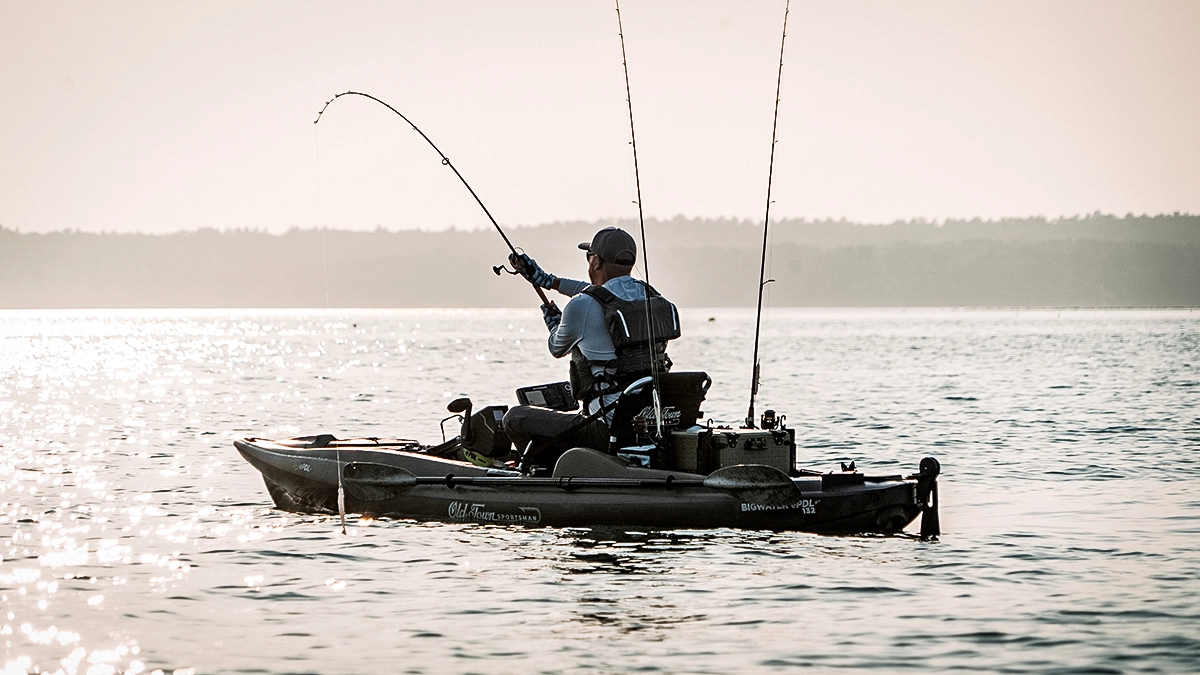
Maine’s natural beauty, abundant sporting opportunities, and down-to-earth people make it an ideal destination. In fact, the license plates say “Vacationland,” a moniker that I think is well-earned. Maine lies at the northern tip of the striped bass’ range, and offers plenty of opportunities to target them in breathtaking settings.
The sweetwater side of things is not to be overlooked either, as the Pine Tree State is home to some of the best smallmouth bass fishing on the East Coast. Oh, and the brook trout fishing is the stuff of legend.
One of the trip’s most curious sights, at least to me, were all of the sturgeon leaping clear of the river. The folks that reside in Maine seemed used to the occurrence, but it truly was something seeing a 6-foot-long relic of prehistory fly skyward. All told, I probably saw this unusual occurrence some 60 times on our final day of fishing.
If you get the opportunity to visit Maine, go. You won’t regret it. The same can be said about the Old Town Sportsman BigWater ePDL+ 132. This big-water kayak would be just as at home on quiet bass ponds, deep rivers, and backwaters. The motor significantly increases the distance you can travel, and the cruise control lets you cover ground while fishing, similar to the way a trolling motor would.


